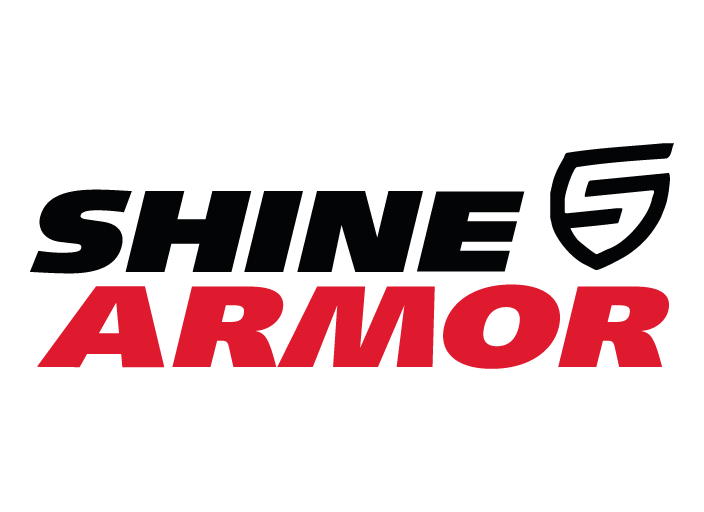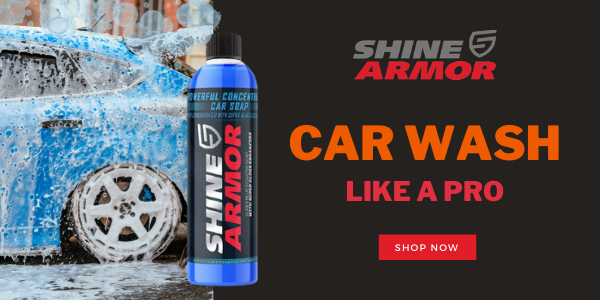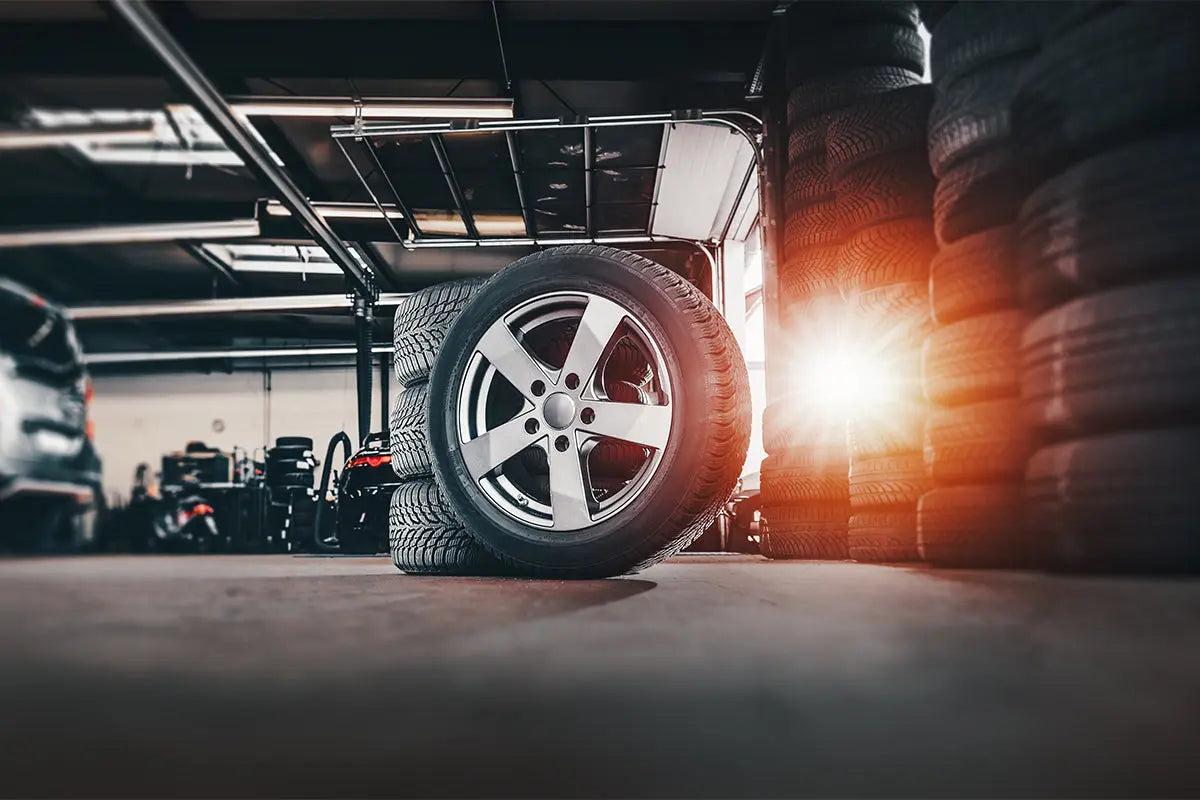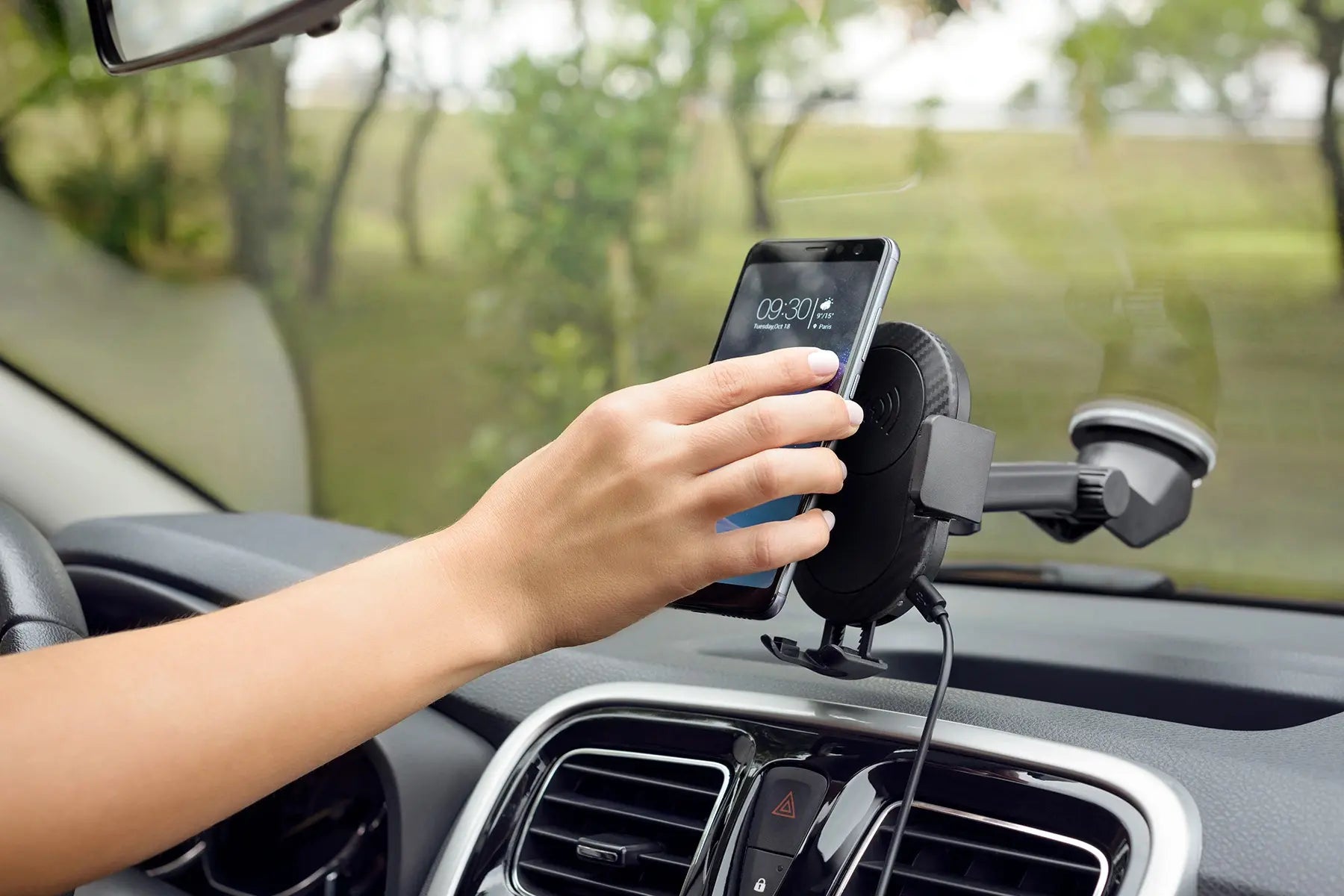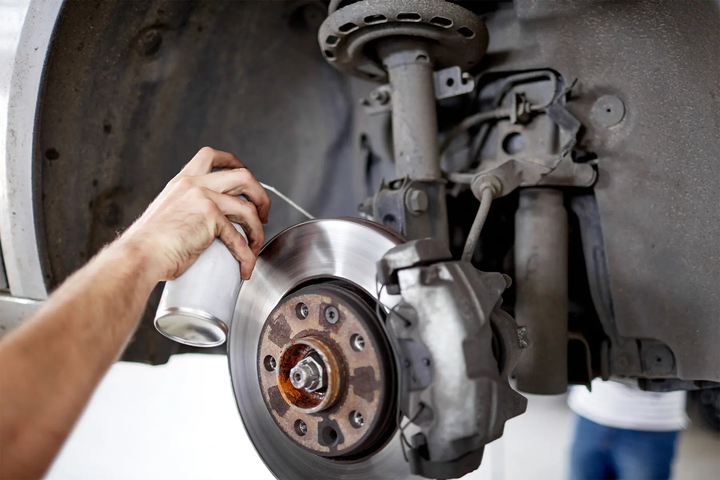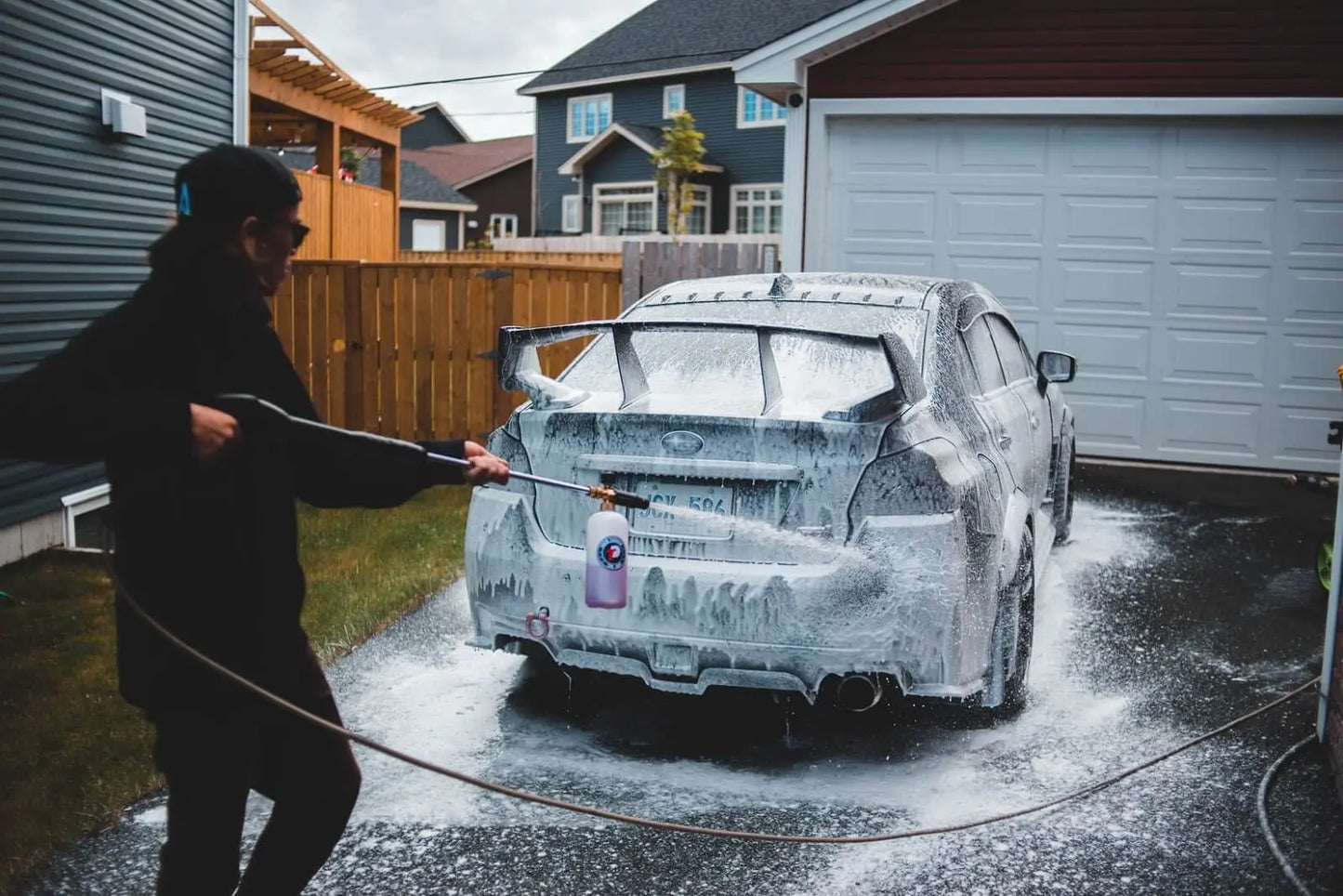
As your vehicle begins to collect dust, dirt, tree sap, bird droppings, and other contaminants, it becomes important to clean these contaminants sooner than later.
While many drivers choose to wash their car simply to increase the shine and appearance, a clean and well maintained vehicle promotes longevity and allows it to maintain on the road longer.
Many of us have heard the risks and warnings surrounding automated car washes, and unfortunately the rumors aren’t too far from the truth. read this article in shine armor blog
Visit these products from shine armor:
- Graphene Ceramic Nano Glass Coating
- Performance Booster Oil Additive
- Graphene Ceramic Spray
- Revive Car Scratch Remover
Automated Car Washes
Traditional automated car washes are known to use a series of brushes, wet mats, water, and air mixed with various soaps and waxes in attempt to clean your vehicle. With a focus on getting as many cars through as possible within a given time. Creating a “satisfactory for most” result, these machines are known to be quite rough on your vehicle.
When we talk about brushes, we are referring to the larger spinning hard brushes that usually focus on the sides of your vehicle, and sometimes your wheels, while wet mats are those long strands of material hanging from above swinging back and forth. The sound of either of these devices on your vehicle becomes an instant reminder of the real risk associated with automatic car washes.
As you begin to understand how to wash your vehicle, you understand the care and caution needed while washing to avoid scratches, dents, or other imperfections, and with the speed and force being used with automatic car washes, this care simply can’t happen. The hard bristle brushes intended to push the dirt away from your vehicle are quite harsh and forceful, and run the risk of scratching your paint, followed by large wet mats that smack back and forth across your vehicles. Nothing like smashing dirt and grim into your paint.
There’s a bigger risk though.
Since you go through these car washes one vehicle after another, anything that may have been on any vehicle that had gone before you, runs the potential to get on your vehicle.
So let's just say earlier that day a vehicle was absolutely filthy when it went through, and now those wet mats have grease, or even worse, a sharp something stuck in them. Now these contaminants will be smashed into your vehicle over and over again.
Now of course, there are advantages to automated car washes, with the only real advantage being time. Automated car washes are extremely quick relative to washing your car by hand, and to be honest, some car owners simply don’t mind that their vehicle is being scratched in the process.
But you aren’t one of those people.
Are Touchless Car Washes Safe?
Touchless car washes have become increasingly popular in recent years due to their convenience and perceived safety compared to traditional car washes that use brushes or other physical contact. However, many car owners are still unsure about the safety and effectiveness of touchless car washes.
The short answer is yes, touchless car washes are generally safe for your car's paint job. Since there is no physical contact between the cleaning mechanism and the car's surface, the risk of scratches or other damage is greatly reduced. Additionally, touchless car washes often use high-pressure water and specialized detergents to remove dirt and grime, which can be gentler on your car's paint than harsher chemical detergents or brushes.
However, there are some potential downsides to touchless car washes. For one, they may not be as effective at removing certain types of grime, such as heavy mud or tar, as traditional car washes. Additionally, since touchless car washes rely solely on water pressure and detergents, they may not be able to clean hard-to-reach areas or remove stuck-on debris as effectively as a brush or other physical cleaning method.
Overall, if you are looking for a quick and convenient way to clean your car without worrying about potential damage to the paint job, a touchless car wash can be a good option. However, if your car is heavily soiled or has hard-to-reach areas that need cleaning, you may want to consider a traditional car wash or a combination of both methods to ensure a thorough clean.
Touchless Automated Car Washes
With the brushes of an automated car was causing so many issues, the want for a better solution was soon to hit the market. Touchless automated car washes are focused around the same quick service, while avoiding the brushes and wet mats.
Instead, these machines used a series of high water pressure and high air pressure in attempts to clean your vehicle. Of course, the idea of cutting corners always comes with some sort of downfall.
The Good
One of the main advantages of touchless car washes is that they are gentle on the car's paint and car exterior. This is because there is no contact with the brushes or other cleaning tools that can scratch or damage the surface. Touchless car washes are also faster than traditional car washes, making them a good option for those who are short on time.
By utilizing water pressure, touchless car washes are more likely to utilize better soap qualities to assist with lifting dirt and grime more effectively.
Many of the touchless washes have also begun utilizing heated water to help break down the wax finishes and contaminations found on your vehicle’s surface. By removing these soft waxes at the early stages of washing, you remove contaminants which may have found themselves stuck in the soft layer. Waxes are then added in the automotive specific soaps, and in many cases are added toward the end of the process.
With modern car washes, many have begun focusing on water recycling and recirculation. This is done with large filtration systems, which collect water being used, and separate the dirt, grime, grease, oils, and any other contaminant, and re-uses the clean water.
These are seen with most touchless systems due to the mass amounts of water being used, and can be seen as a positive attempt at environmental efforts, since they aren’t simply washing the chemicals and contaminants away as wastewater.
The accessibility of water is without a doubt an advantage. The water pressure allows for water to find its way into every nook and cranny along your vehicle, from the corners of every trim piece to the underbody. These areas may be missed with a conventional brush or mat, since they are unable to get deep into small areas.
We can’t speak about any automated washing system without adding time spent into the list of good traits, since washing your vehicle by hand does tend to be quite time consuming.
The Bad
However, there are also some downsides to touchless car washes. For example, they may not be as effective at removing stubborn dirt and grime, especially if the car has not been washed in a while. In addition, the high-pressure water jets can sometimes cause damage to delicate parts of the car, such as the antenna or side mirrors.
Another potential issue with touchless car washes is that they may not be able to clean hard-to-reach areas, such as the wheels or undercarriage. This can lead to the buildup of dirt and debris, which can eventually cause corrosion or other damage.
Anyone who has sat within a vehicle going through a touchless wash can speak about the insane pressure being applied to the vehicle, with some touchless systems using around 2200 psi of water pressure. In comparison, a properly flowing garden hose has between 40 and 60 psi of water pressure.
These high pressures run the risk of actually embedding surface contaminations deeper into your painted surface, or even worse, pressing them deeper and down along the side of your vehicle creating scratches, and while scratch repair is doable, it is both an added expense and added time.
Touchless car washes are also known for not quite cleaning the vehicle enough. While the idea of blowing all the dirt off of your vehicle sounds great, the reality is that sometimes a little more force is needed in the washing process. This becomes extremely obvious when you take a microfiber towel and wipe down a section of your vehicle to discover a large amount of fine dust has remained on your vehicle.
When using a touchless system, the force does cause the water to end up everywhere, calling for caution when using different soaps. This has caused many automatic car washes to use an all purpose soap intended for your paint, glass, wheels, tires, and underbody.
This means specialty soaps may not be used for specific areas, so it’s important to ensure all brake dust has been removed from your wheels to avoid damage, and specialty products such as glass cleaners and tire shine gel coatings will need to be added at another time.
Benefits of Touchless Car Washes:
Reduced Risk of Scratches:
Touchless car washes use high-pressure water jets and specialized cleaning agents to remove dirt and grime from the vehicle's surface. This reduces the risk of scratches that can occur with traditional brushes and scrubbers.
Paint Protection:
Touchless car washes are considered safer for your vehicle's paint job. They minimize direct contact with the paint, protecting it from potential damage.
Quick and Convenient:
Touchless car washes are automated and require minimal interaction from the vehicle owner. This makes them a convenient option for those who want a quick and hassle-free cleaning.
Variety of Cleaning Agents:
These car washes offer a range of cleaning agents that cater to different types of dirt and contaminants. This ensures a thorough cleaning process.
Drawbacks of Touchless Car Washes:
Limited Cleaning Power:
While touchless car washes are effective for removing dirt, they may struggle with stubborn or caked-on grime. Manual cleaning might still be necessary in some cases.
Cost:
Touchless car washes often come with a higher price tag compared to traditional car washes. The advanced technology and specialized cleaning agents contribute to the increased cost.
Environmental Concerns:
Touchless car washes use a significant amount of water to achieve their high-pressure cleaning. In regions with water scarcity, this can be a concern.
Missed Spots:
In some cases, touchless car washes might miss certain areas of the vehicle, leaving behind spots that require manual cleaning.
How Does a Touchless Car Wash Work?
The process typically starts with a pre-soak stage, where a solution is applied to the vehicle to loosen and remove dirt and grime. Next, a high-pressure rinse is used to remove the pre-soak solution and any loose dirt or debris. Then, a specialized cleaning solution is applied to the vehicle, which is designed to break down and remove tough stains and dirt.
After the cleaning solution has been applied, the car is rinsed again with high-pressure water to remove the solution and any remaining dirt or debris. Finally, the car is dried using air blowers or a combination of air blowers and microfiber towels.
How To Get the Most Out of Touchless Car Washes
While there simply is no comparison to hand washing your vehicle, you may find yourself with not quite enough hours in the day, and the automatic car wash has become the easiest route.
To get the most out of a touchless car wash, it becomes important to take care of your paint, before you need the wash. This means at some point in time, having your vehicle coated with either wax or ceramic coatings, and taking advantage of spray on top coatings between washes.
These coatings not only create a deeper shine, and more mirrored finish, but protect your paint front contamination and UV damage.
Deep application coatings, such as wax, polish, or ceramics create a barrier layer between your paint, and the dirt. These coatings protect your vehicle from scratches and create a smoother surface.
Once these deep application coatings are applied, spray applications create a soft top layer which can easily be washed away with each wash. These spray on coatings can also be applied to any painted surface to create a protective layer.
As an example, if you know you’ll be using a touchless automated car wash, you may choose to get your vehicle ceramic coated. Now that your vehicle is coated, you’re less likely to gain damage from a car wash.
When your vehicle is washed and dried, take a few minutes to coat your vehicle in a spray ceramic coating, which helps remove any missed dirt and adds a new top coat protective layer. This means the next time you wash your car, you have another extra layer of protection on your vehicle, which can be reapplied to create a mirror finish.
With the dirt and grime less likely to stick to the paint of your vehicle, less force will be needed to pull the contaminants off of your car for a better outcome, and less risk as your vehicle is washed.
Summary
While there really is no comparison to hand washing your vehicle the right way, many consumers find themselves sitting in the line for automatic car washes.
If you were to choose the best of the two evils, a touchless system will be less likely to damage your vehicle than a traditional automatic car wash, with the options for paint-protective coatings adding another level of protection.
Are touchless washes good or bad? Well, they run the risk of damaging your vehicle, but a clean car is always better than a dirty one, especially with the acidity of many contaminants that may find their way onto your vehicle, so auto-wash away -- just not too much.
Sources
https://www.familyhandyman.com/article/will-a-car-wash-hurt-your-cars-finish/
https://drivedetailed.com/touchless-car-washes/
https://www.thedrive.com/cleaning-detailing/35348/what-is-ceramic-coating
